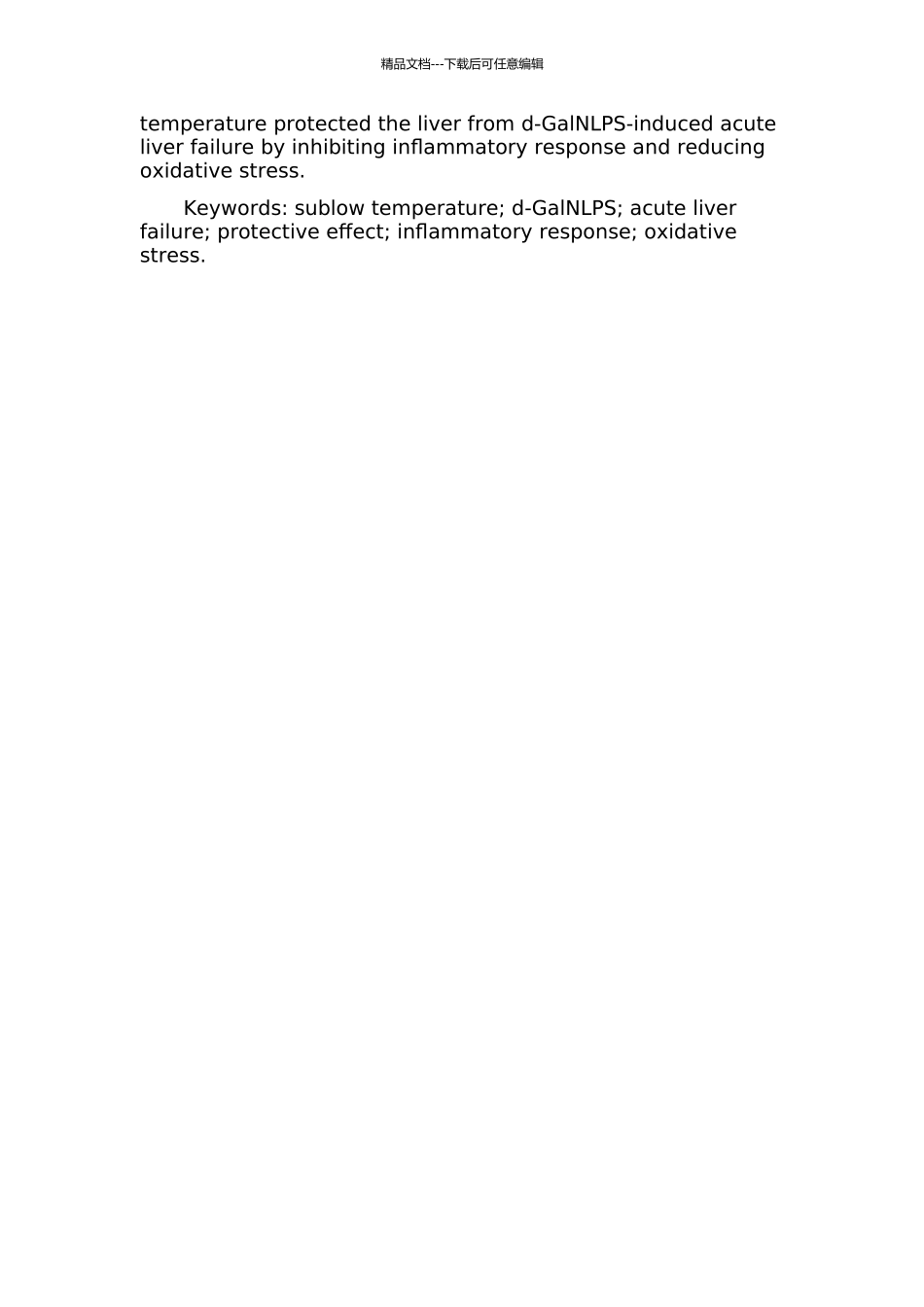精品文档---下载后可任意编辑亚低温对 d-GalNLPS 诱导大鼠急性肝衰竭保护作用的讨论的开题报告摘要:肝衰竭是一种严重的临床疾病,具有高死亡率和高残疾率。本讨论旨在探究亚低温对 d-GalNLPS 诱导大鼠急性肝衰竭的保护作用及其机制。本实验使用健康 C57BL/6J 雄性大鼠,随机分为正常对比组、模型组和亚低温治疗组。模型组和亚低温治疗组均给予 d-GalNLPS 诱导急性肝衰竭,而亚低温治疗组在 d-GalNLPS 注射后 0.5h、1h、2h 和 4h 进行 7°C 低温处理。观察大鼠的生存率、肝脏组织病理学变化、肝脏功能指标和肝脏细胞损伤指标。预期结果:亚低温治疗组大鼠生存率高于模型组,肝脏组织病理学改变较轻,肝脏功能恢复较快,肝脏细胞损伤指标较低。机制分析表明,亚低温通过抑制炎症反应和减轻氧化应激,保护肝脏免受 d-GalNLPS 诱导的急性肝衰竭的损伤。关键词:亚低温;d-GalNLPS;急性肝衰竭;保护作用;炎症反应;氧化应激Abstract:Liver failure is a serious clinical condition with high mortality and disability rates. This study aims to investigate the protective effect and mechanism of sublow temperature on d-GalNLPS-induced acute liver failure in rats.Healthy male C57BL/6J rats were randomly divided into normal control group, model group and sublow temperature treatment group. The model group and the sublow temperature treatment group were induced acute liver failure with d-GalNLPS, while the sublow temperature treatment group was subjected to 7°C low temperature treatment at 0.5h, 1h, 2h and 4h after d-GalNLPS injection. The survival rate, hepatic histopathology, liver function and liver cell damage indicators of rats were observed.Expected results: The survival rate of rats in the sublow temperature treatment group was higher than that in the model group, the hepatic histopathology was milder, the liver function recovered faster, and the liver cell damage indicators were lower. The mechanism analysis showed that sublow 精品文档---下载后可任意编辑temperature protected the liver from d-GalNLPS-induced acute liver failure by inhibiting inflammatory response and reducing oxidative stress.Keywords: sublow temperature; d-GalNLPS; acute liver failure; protective effect; inflammatory response; oxidative stress.

